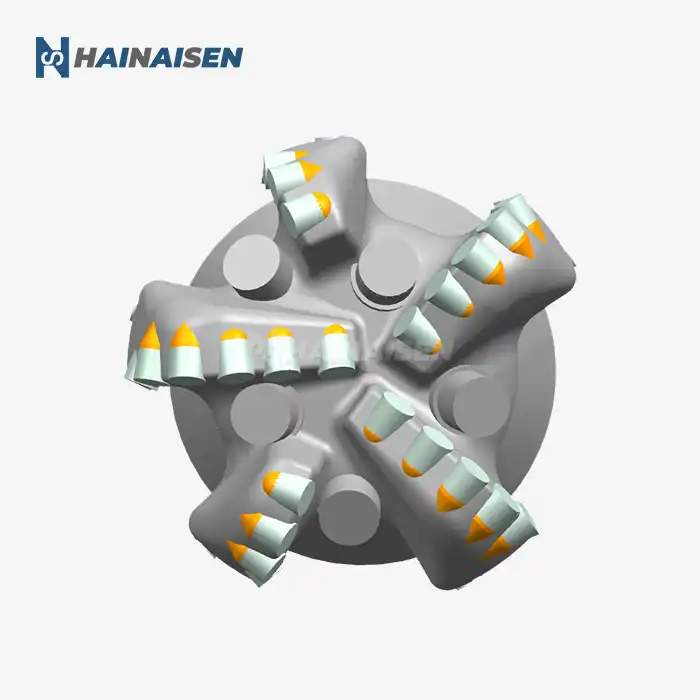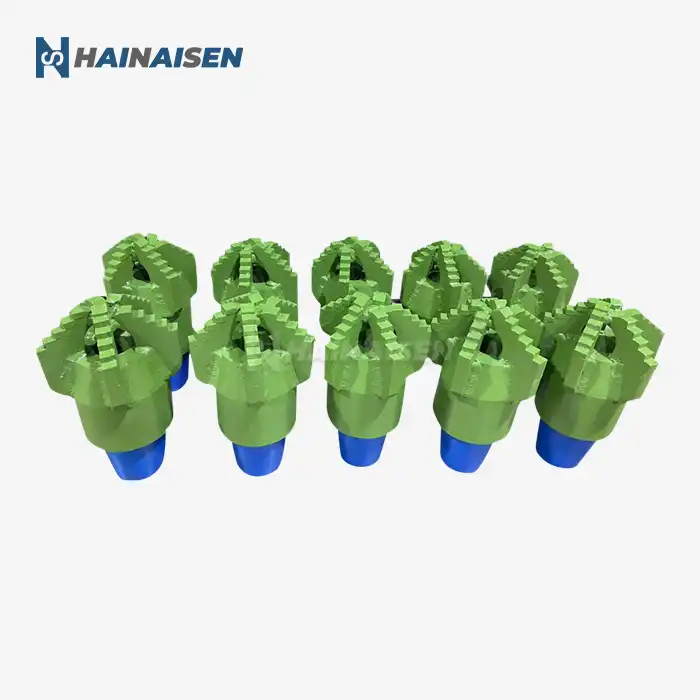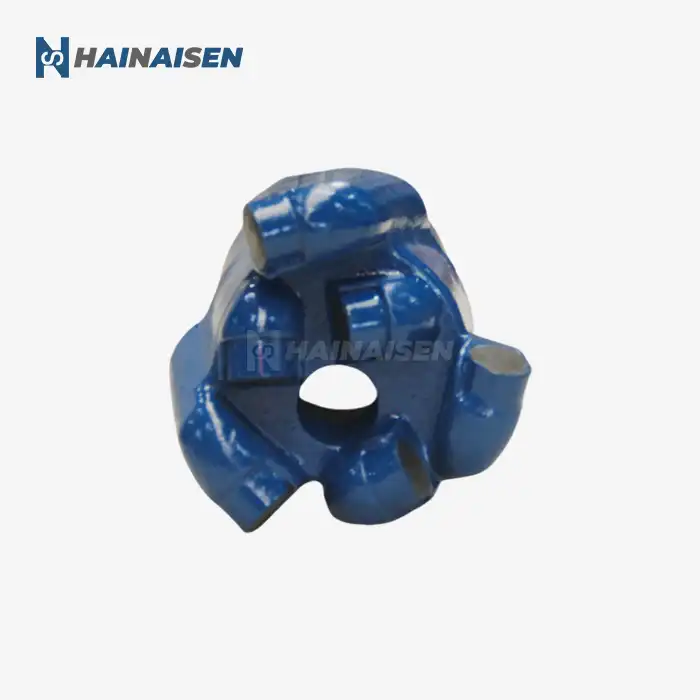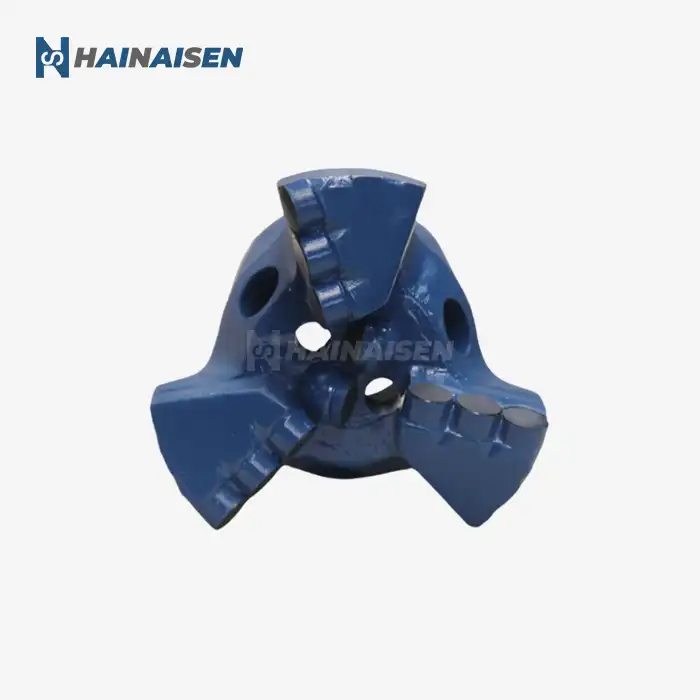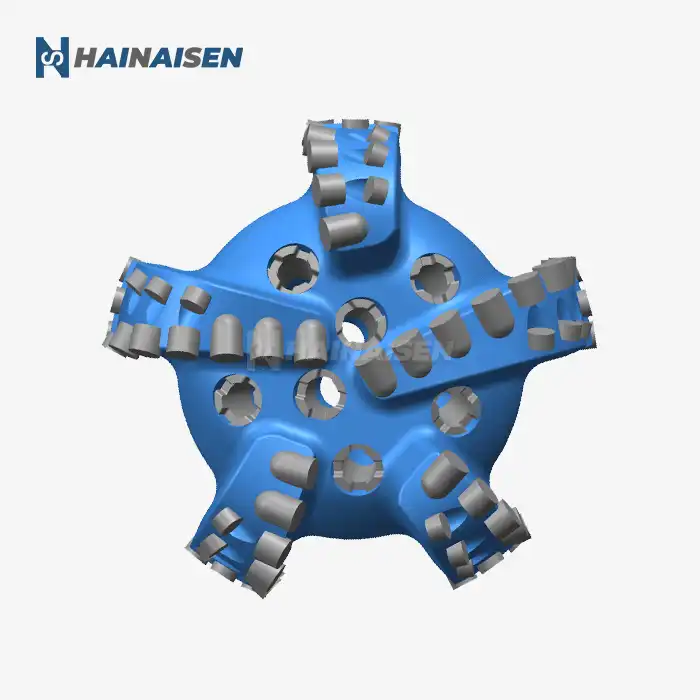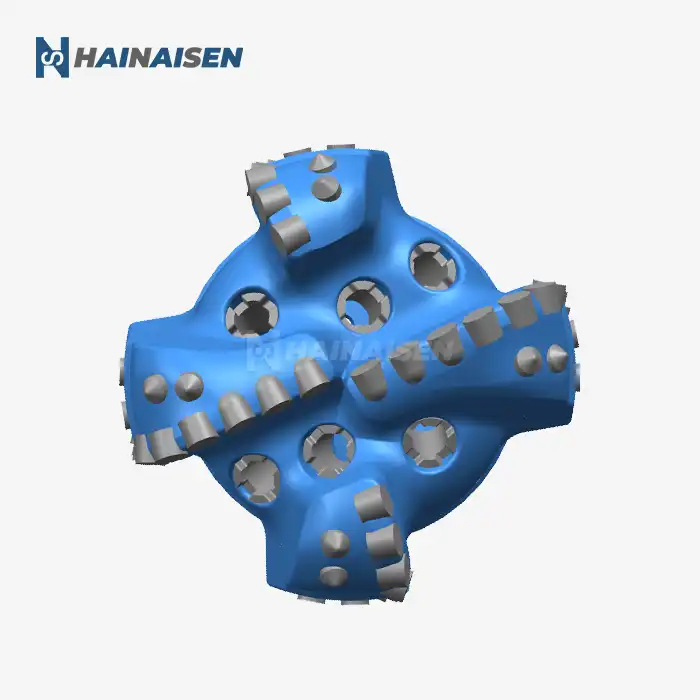Science behind PDC bit wing design
A remarkable combination of technical concepts and practical application is the science underpinning PDC bit wing design. One of the most important factors in a PDC bit's drilling efficiency and general performance is its wing design. How well the bit can drill into the formation and remove cuttings is dependent on the shape, number, and placement of its wings.
Wing Number and Configuration
Compared to more conventional designs, a 6 Wings PDC Drill Bit has a variety of benefits due to its greater wing count. Cutting forces are distributed more evenly across the bit face with the six-wing design. With this equilibrium, drilling operations are more stable, which is especially helpful for vertical well applications where keeping the borehole straight is of the utmost importance.
Cutting Structure Optimization
A number of PDC cutters are cleverly positioned within each bit wing. The optimal arrangement of these cutters with respect to the formation is seen in their arrangement. The bit remains stable even when the cutters are placed on six wings, allowing for a more forceful cutting action. Bit removal of more formation material each rotation is made possible by this arrangement, which directly contributes to an improved Rate of Penetration (ROP).
Hydraulic Efficiency
The wing design of the 6 Wings PDC Drill Bit also plays a significant role in the bit's hydraulic efficiency. The spaces between the wings, known as junk slots, are carefully engineered to facilitate the flow of drilling fluid and the removal of cuttings. In a 6-wing design, these junk slots are optimized to ensure efficient cleaning of the bit face and rapid evacuation of cuttings, preventing bit balling and maintaining consistent ROP.

Case study: ROP improvements in vertical drilling
To illustrate the practical benefits of the 6 Wings PDC Drill Bit in enhancing ROP for vertical wells, let's examine a real-world case study from an oil field in the Middle East.
Project Overview
An operator was facing challenges with slow drilling rates in a vertical section of a well, characterized by interbedded layers of shale and limestone. The conventional 4-wing PDC bits previously used were struggling to maintain consistent performance across these varied formations.
Implementation of 6 Wings PDC Drill Bit
The decision was made to test a 6 Wings PDC Drill Bit specifically designed for these mixed formations. The bit was equipped with premium-grade PDC cutters and featured optimized hydraulics for efficient cuttings removal.
Results and Analysis
The results were remarkable:
- ROP Increase: The 6 Wings PDC Drill Bit achieved an average ROP of 45 meters per hour, compared to the previous 28 meters per hour with the 4-wing bit, representing a 60% improvement.
- Consistent Performance: The bit maintained a steady ROP across both shale and limestone sections, demonstrating its versatility in mixed formations.
- Reduced Vibration: Drillers reported significantly lower levels of vibration, contributing to improved borehole quality and reduced risk of downhole tool damage.
- Extended Bit Life: Despite the increased ROP, the 6 Wings PDC Drill Bit showed less wear after completing the section, indicating potential for even longer runs in future operations.
This case study clearly demonstrates the capacity of the 6 Wings PDC Drill Bit to substantially enhance drilling efficiency in vertical wells, particularly in environments with varying formation characteristics.

Optimizing 6-wing PDC bits for various formations
While the 6 Wings PDC Drill Bit design offers inherent advantages, its performance can be further optimized for specific formation types. This customization is crucial for maximizing ROP and bit longevity across diverse drilling environments.
Cutter Selection and Placement
For softer formations like shale or sand, larger, more aggressive PDC cutters can be used to maximize ROP. These cutters are typically placed with higher back rake angles to facilitate deeper penetration. In contrast, harder formations such as limestone or dolomite require smaller, more durable cutters with lower back rake angles to withstand the increased abrasion and impact forces.
Hydraulic Optimization
The hydraulic design of the 6-wing bit can be tailored to formation specifics. For sticky formations prone to bit balling, increased nozzle sizes and optimized fluid channels between the wings can enhance cuttings evacuation. In abrasive formations, strategically placed nozzles can direct flow to cool and clean the cutters more effectively, prolonging bit life.
Matrix Composition
The matrix material that forms the body of the bit can be adjusted based on formation abrasiveness. A harder matrix composition might be used for highly abrasive formations to resist wear, while a slightly softer matrix could be employed in less abrasive environments to allow for controlled erosion that helps maintain the bit's cutting structure.
Gauge Protection
To prevent the gauge area of the 6-wing bit from being overly worn by formations, extra protection can be applied. To keep the borehole diameter constant over long runs, this may include using hardfacing materials or specific inlays.
Achieving optimal drilling performance across a wide range of vertical well applications requires operators to carefully analyze these parameters and customize the 6 Wings PDC Drill Bit design to unique formation characteristics. Bits like these are great for improving ROP in all kinds of drilling conditions because of their adaptability and the benefits of the 6-wing design.
Conclusion
Better Rate of Penetration (ROP) for vertical wells is made possible by the 6 Wings PDC Drill Bit from a 6 Wings PDC Drill Bit factory, which is a big step forward in drilling technology. With its cleverly placed six wings and high-quality PDC cutters, this bit's innovative design makes it more stable, improves cutting performance, and makes the hydraulics work better. There were big improvements in ROP and consistency across different forms in the case study that was shown. This shows that the design works in the real world. The fact that these bits can be adjusted to work best in different rock types also means that they can be used in a lot of different digging situations.
Using 6 Wings PDC Drill Bits can help oil and gas drilling companies, oil service providers, and other groups that do vertical drilling work much more efficiently and lower their total project costs. These bits can be used for many different tasks because they are flexible and can be changed to fit specific needs. They can be used for oil and gas research, environmental drilling, and more.
Are you looking to enhance your drilling operations and achieve superior ROP in your vertical wells? Shaanxi Hainaisen Petroleum Technology Co., Ltd. specializes in the development and production of advanced drilling tools, including our state-of-the-art 6 Wings PDC Drill Bits. With our extensive R&D capabilities and 3,500m² modern production facility equipped with cutting-edge machinery, we're uniquely positioned to meet your specific drilling needs.
FAQ
1. What makes a 6 Wings PDC Drill Bit different from conventional designs?
A 6 Wings PDC Drill Bit features an innovative design with six strategically positioned wings, as opposed to the traditional 3 or 4-wing configurations. This design provides enhanced stability, more efficient cutting action, and improved hydraulic performance, resulting in higher ROP and better overall drilling efficiency.
2. Can 6 Wings PDC Drill Bits be used in all types of formations?
Even though 6 Wings PDC Drill Bits can be used for many things, they can be made to work best with certain types of formations. They work best on rocks like shale, limestone, sandstone, and gypsum that are medium hard and have low compressive strength. But because the cutters, hydraulics, and matrix makeup can be changed, these bits can be used in a lot of different drilling situations.
3. How does the 6-wing design contribute to improved ROP?
Improved stability while drilling, less vibration, and more effective cutting action are all ways in which the 6-wing design improves ROP. With more cutters on the bit face made possible by the extra wings, the amount of formation eliminated per revolution increases. Moreover, the 6-wing design's enhanced hydraulics allow for greater cuttings removal and cooling, resulting in constant performance.
4. What maintenance is required for 6 Wings PDC Drill Bits?
6 Wings PDC Drill Bits are designed for durability and longevity. However, regular inspection for wear and damage is recommended. After each run, the bit should be cleaned thoroughly and checked for any signs of cutter or body damage. Proper storage and handling between uses will help maintain the bit's performance and extend its lifespan.
6 Wings PDC Drill Bit Manufacturers | HNS
Looking for high-quality 6 Wings PDC Drill Bits? Look no further than Shaanxi Hainaisen Petroleum Technology Co., Ltd. As a leading manufacturer and supplier in the industry, we specialize in producing advanced drilling tools tailored to your specific needs. Our state-of-the-art facility and experienced R&D team ensure that each bit meets the highest standards of quality and performance.
No matter what kind of drilling you're doing—geothermal exploration, oil and gas, coal bed methane—our 6 Wings PDC Drill Bits will provide you with superior ROP and drilling efficiency. To meet the specific geological difficulties and operational needs of your business, we provide customisation services.
Don't settle for subpar drilling equipment. Choose Hainaisen for unparalleled quality, performance, and customer service. Contact us today at hainaisen@hnsdrillbit.com to discuss your drilling needs and discover how our 6 Wings PDC Drill Bits can elevate your operations to new heights of productivity and cost-effectiveness.
References
1. Smith, J.R. et al. (2020). "Advancements in PDC Bit Design: Optimizing Wing Configuration for Enhanced ROP." Journal of Petroleum Technology, 72(5), 62-68.
2. Johnson, A.K. and Brown, T.L. (2019). "Comparative Analysis of 4-Wing vs. 6-Wing PDC Bits in Vertical Well Applications." SPE Drilling & Completion, 34(3), 217-229.
3. Zhang, Y. et al. (2021). "Hydraulic Optimization of Multi-Wing PDC Bits for Improved Cuttings Transport in Vertical Wells." Journal of Natural Gas Science and Engineering, 88, 103844.
4. Peterson, M.R. (2018). "The Impact of PDC Bit Wing Design on Drilling Efficiency and Stability." Proceedings of the International Petroleum Technology Conference, Bangkok, Thailand.
5. Garcia, L.A. and Martinez, R.S. (2020). "Case Studies: Implementation of 6-Wing PDC Bits in Challenging Vertical Well Environments." SPE Middle East Oil and Gas Show and Conference, Manama, Bahrain.
6. Wilson, B.T. and Thompson, K.E. (2019). "Material Science Advancements in PDC Bit Manufacturing: Implications for Multi-Wing Designs." Journal of Petroleum Science and Engineering, 174, 729-741.



